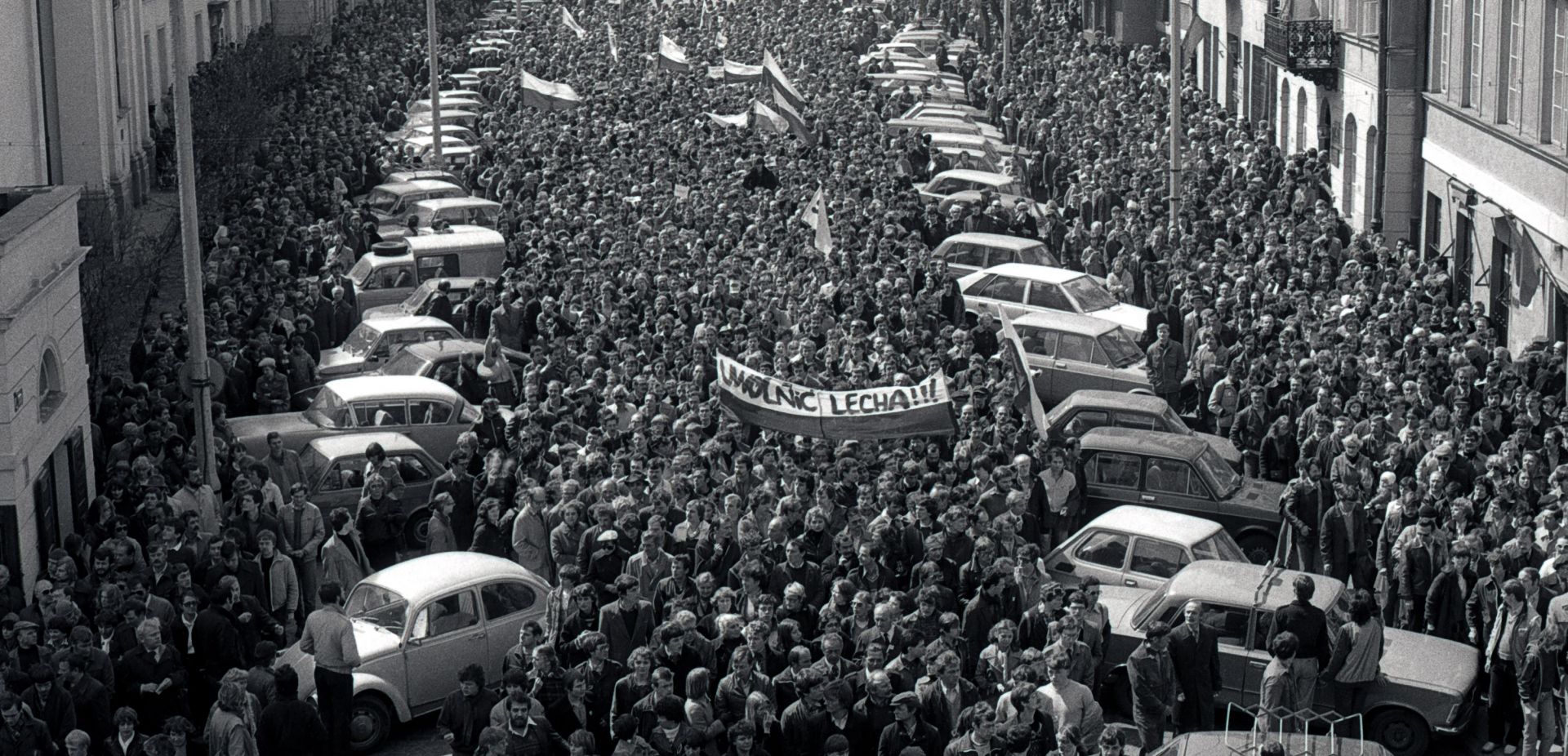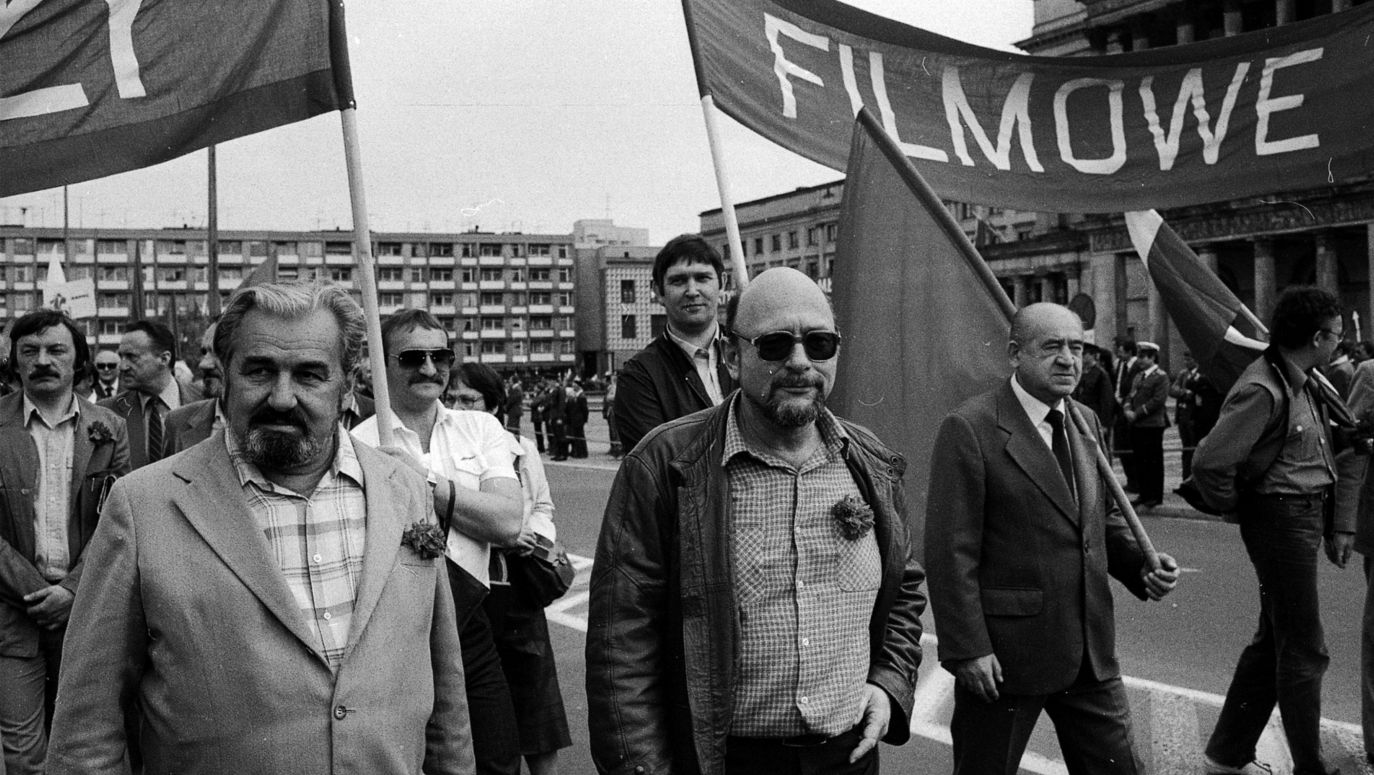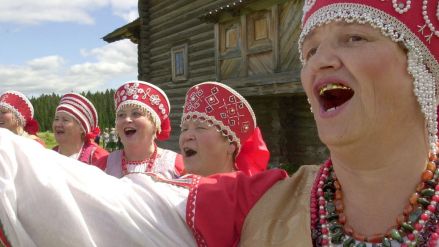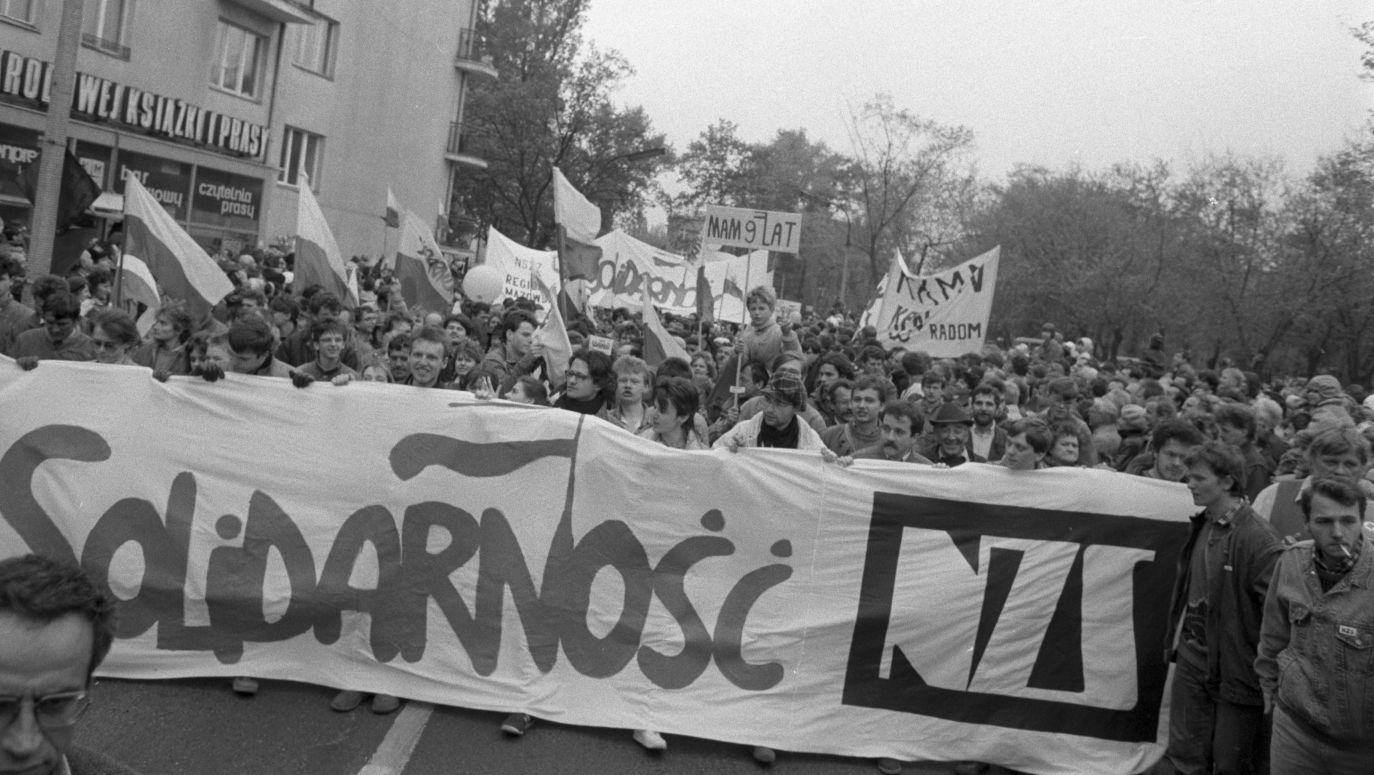Anniversaries of the Constitution of 3 May, celebrated in the interwar Second Polish Republic, were forbidden under the communist regime of the People’s Republic. The authorities could not allow patriotic competition for the internationalist, i.e., the communist, 1 May. All Polish flags displayed on 1 May disappeared the next day, or even at night.
In the days of legalized Solidarity, the authorities allowed for the celebrations of, controversial for them, anniversaries of 3 May, or even 11 November, i.e., the Independence Day. After the introduction of the martial law and in the 1980s, everything was back to “normal” according to the communist standard, but people did not forget that, even if for a short time and not a very long time ago, things had been different.
When in several cities, including Warsaw and Gdańsk, there were attempts to form demonstrations after mass services on 3 May, the militia reaction was quite different than two days before. The gathered people were brutally dispersed, both in the Gdańsk Old Town and in Warsaw near the Śląsko-Dąbrowski Bridge, there were many hours of skirmishes with the police. Many were detained, beaten up, and sentenced.
In Gdańsk, the hiding Edward Janus was asked to lead the march on 3 May – the way he had managed the 1 May demonstration must have made a strong impression. Janus refused though. He knew that his face had been recorded in many photos that he would be immediately identified and imprisoned. He did not, however, escape that fate anyway.
Edward Janus refreshed his Gdańsk memories when, after many years, he looked at the photos of the 1982 march on the Internet. Later, the Gdańsk branch of the Institute of National Remembrance organized an exhibition of photos - those that did not fall into the hands of the SB through the fault of the careless photographer - on the 35th anniversary of the events. Janus was invited to come from the USA to Poland on the occasion of the anniversary celebrations, aroused media interest and the history of Solidarity regained a forgotten hero.
– Krzysztof Zwoliński
TVP WEEKLY. Editorial team and jornalists
– Translated by Ewa Sawicka







